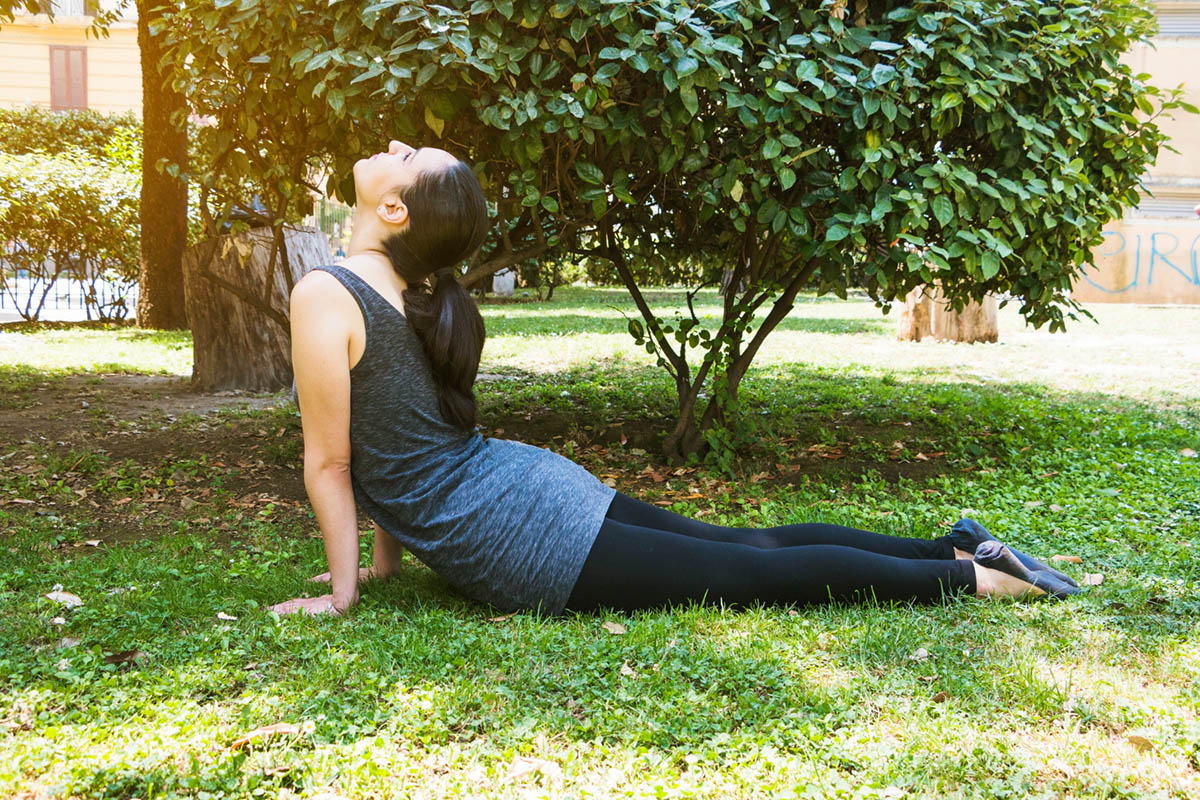
Lower back pain is a common affliction that can significantly impact daily life. It is so prevalent that it affects a substantial portion of the population. According to the Global Burden of Disease (GBD) 2021 study, up to 23% of adults worldwide suffer from chronic low back pain, with recurrence rates varying between 24% to 80%. In 2020 alone, low back pain (LBP) affected 619 million people globally, and this number is projected to increase to 843 million cases by 2050 due to population growth and aging.
Managing lower back pain effectively is crucial for maintaining a good quality of life. Physical therapy for lower back pain exercises are among the most beneficial ways to alleviate this discomfort. Exercise can help strengthen the glute, hamstring, and hip flexor muscles around the spine, improve flexibility, and increase range of motion. This blog explores ten effective exercises designed to relieve lower back pain. When performed consistently and correctly, these therapeutic exercises can help you manage pain and improve overall back health at Scottsdale Physical Therapy & Performance.
Exercise 1: Bridges
Bridges are an effective exercise that strengthens the gluteus maximus and lower back while improving stability. They are often included in physical therapy exercises for lower back pain programs. To perform this exercise, lie on your back with your knees bent, elevate your hips until your body forms a straight line from shoulders to knees, and hold for a few seconds before lowering. This position helps engage the gluteal and low-back muscles, supporting a neutral spine.
- How to Do It: Lie on your back with your knees bent and feet flat on the floor. Place your arms at your sides, palms facing down. Engage your core muscles and lift your hips off the ground until your body forms a straight line from your shoulders to your knees. Hold the position for a few seconds, then slowly lower your hips back to the floor.
- Target Muscles: Glutes, hamstrings, core.
- Benefits: Bridges help strengthen the lower back muscles, glutes, and hamstrings. This exercise enhances stability and supports the spine, reducing lower back pain and improving overall core strength,
Exercise 2: Knee-to-Chest Stretches
Knee-to-chest stretches are a gentle way to alleviate tension in the lumbar spine and are commonly recommended in back pain physical therapy routines. To perform this stretch, lie on your back and draw one knee towards your chest, holding for 20-30 seconds before switching legs. This effective stretch helps release tight hip flexors and improve blood flow to the lower back.
- How to Do It: Lie on your back with your knees bent and feet flat on the floor. Bring one knee toward your chest, keeping the other foot flat on the floor. Hold the stretch for 15-30 seconds, then switch legs.
- Target Muscles: Lower back, glutes, hamstrings.
- Benefits: This stretch helps to relieve tension in the lower back and alleviates tightness in the glutes and hamstrings, often contributing to back pain.
Exercise 3: Cat-Cow Pose
The Cat-Cow Pose is a gentle spinal motion exercise that helps relieve back tension while improving flexibility. To perform it, start on all fours, alternating between arching your back toward the ceiling (Cat) and dropping your belly toward the floor (Cow), coordinating your breath with each movement. This position helps mobilize the entire spine and reduce muscle soreness.
- How to Do It: Start on all fours with your wrists under your shoulders and your knees under your hips. Inhale as you arch your back, dropping your belly toward the floor and lifting your head and tailbone toward the ceiling (Cow Pose). Exhale as you round your back, tucking your chin to your chest and drawing your belly button toward your spine (Cat Pose). Repeat for several breaths.
- Target Muscles: Spine, core, back muscles.
- Benefits: The Cat-Cow Pose improves flexibility and mobility in the spine, helping to reduce stiffness and enhance overall back health.
Exercise 4: Bird Dog

The Bird Dog exercise enhances core stability and strengthens the lower back. Begin on all fours and extend one arm forward while simultaneously extending the opposite leg backward, holding for a few seconds before switching sides. This exercise engages the gluteal, hamstring, and core muscles to improve balance and support muscle strength.
- How to Do It: Start on all fours with your wrists under your shoulders and knees under your hips. Extend one arm forward while simultaneously extending the opposite leg backward. Hold for a few seconds, then return to the starting position. Repeat on the other side.
- Target Muscles: Core, back muscles, glutes.
- Benefits: This exercise strengthens the core, back muscles, and glutes, improving balance and stability, which are crucial for reducing lower back pain.
Exercise 5: Plank
The Plank is a powerful isometric exercise that targets the core and helps build strength and stability in the lower back. To perform it, position yourself face down with your forearms and toes on the ground, keeping your body straight from head to heels. This exercise enhances muscle mass and strength, improving overall body performance. This exercise can be a valuable part of your routine to return to sports activities with improved core strength and stability.
- How to Do It: Begin in a push-up position with your forearms on the ground and your body straight from your head to your heels. Engage your core and hold the position for 20-30 seconds, gradually increasing the time as you build strength.
- Target Muscles: Core, back muscles, shoulders.
- Benefits: Planks strengthen the core and back muscles, which support the spine and improve overall stability, helping to alleviate back pain.
Exercise 6: Child’s Pose
Child’s Pose is a gentle stretching exercise that helps relieve tension in the lower back and promotes relaxation. To perform this exercise, kneel on the floor, sit back on your heels, and reach your arms forward while lowering your forehead to the ground. This comfortable position helps alleviate tightness in the entire body, including the back and shoulders.
- How to Do It: Start by kneeling on the floor with your big toes touching and knees spread apart. Sit back on your heels and reach your arms forward, lowering your forehead to the ground. Hold the position for 20-30 seconds.
- Target Muscles: Back muscles, shoulders.
- Benefits: Child’s Pose provides a gentle stretch to the back and shoulders, promoting relaxation and easing muscle tension in the lower back.
Exercise 7: Pelvic Tilts
Pelvic tilts are an effective way to strengthen the lower back while improving mobility in the pelvic region. To perform this exercise, lie on your back with your knees bent and feet flat on the floor, gently flattening your lower back against the ground by tilting your pelvis upward. This exercise can help manage muscle pain and hip flexor tightness by enhancing muscle strength.
- How to Do It: Lie on your back with your knees bent and feet flat on the floor. Tighten your abdominal muscles and gently rock your pelvis upward, flattening the curve of your lower back against the floor. Hold for a few seconds, then relax.
- Target Muscles: Core, lower back.
- Benefits: Pelvic tilts strengthen the core and improve pelvic stability, which can help reduce lower back pain and prevent future episodes.
Exercise 8: Partial Crunches
Partial crunches engage the core muscles to strengthen the abdomen and support the lower back. Correctly performing them can alleviate back pain while improving stability and muscle strength. These gentle stretching exercises target the tummy muscles, contributing to better overall body composition.
- How to Do It: Lie on your back with your knees bent and feet flat on the floor. Cross your arms over your chest or place your hands behind your head. Lift your head and shoulders off the ground, engaging your core muscles. Hold for a moment, then lower back down.
- Target Muscles: Core.
- Benefits: Partial crunches target the abdominal muscles, strengthening the core and improving control, which can support the lower back and reduce pain.
Exercise 9: Hamstring Stretches
Hamstring stretches are essential for maintaining flexibility in the back of your legs, which can significantly impact the lower back. Lengthening the hamstring muscles relieves tension in the lower back area, promoting comfort and range of motion. Incorporate this stretch to improve flexibility and reduce muscle soreness.
- How to Do It: Lie on your back with one leg straight to the floor. Lift the other leg towards the ceiling, keeping it straight. Use a towel or strap around the foot to gently pull the leg towards you, holding the stretch for 15-30 seconds before switching legs.
- Target Muscles: Hamstrings.
- Benefits: Stretching the hamstrings can relieve tension in the lower back, as tight hamstrings often contribute to back pain.
Exercise 10: Lower Back Rotational Stretches

Lower back rotational stretches help improve flexibility and alleviate tension in the lower back by gently rotating the spine. To perform this stretch, lie on your back with your knees bent and feet flat on the floor, then slowly drop both knees to one side while keeping your shoulders on the ground, holding for 15-30 seconds before switching sides.
- How to Do It: Lie on your back with your knees bent and feet flat on the floor. Slowly let your knees fall to one side while keeping your shoulders flat. Hold for 15-30 seconds, then return to the starting position and repeat on the other side.
- Target Muscles: Lower back, obliques.
- Benefits: This stretch improves mobility in the lower back and reduces stiffness, helping to alleviate pain and discomfort.
How to Prevent Lower Back Pain
Preventing lower back pain involves maintaining good posture, practicing proper body mechanics, and staying physically active. Incorporate exercises that strengthen your core and improve flexibility into your routine. Additionally, avoid prolonged sitting and lift objects correctly by bending your knees and keeping your back straight.
Conclusion
Regular exercise is a powerful tool for managing and alleviating lower back pain. Incorporating these ten exercises into your routine can help strengthen the muscles supporting your spine, improve flexibility, and reduce muscle tension. However, it’s essential to consult with a healthcare provider before starting any new exercise regimen, especially if you have chronic or severe back pain.
Staying active and following a consistent exercise routine can better manage lower back pain and improve overall quality of life.
FAQs
How often should I do these exercises?
Aim to perform these exercises 2-3 times per week. Consistency is key to experiencing the benefits of these movements.
Are these exercises suitable for everyone with lower back pain?
While these exercises are generally safe for most people, it’s essential to consult with a healthcare provider before starting, especially if you have underlying health conditions or severe pain.
Can these exercises completely cure my lower back pain?
These exercises can significantly reduce pain and improve back health but may not completely cure lower back pain. A comprehensive approach that includes physical therapy, proper posture, and lifestyle changes may be necessary for long-term relief.









